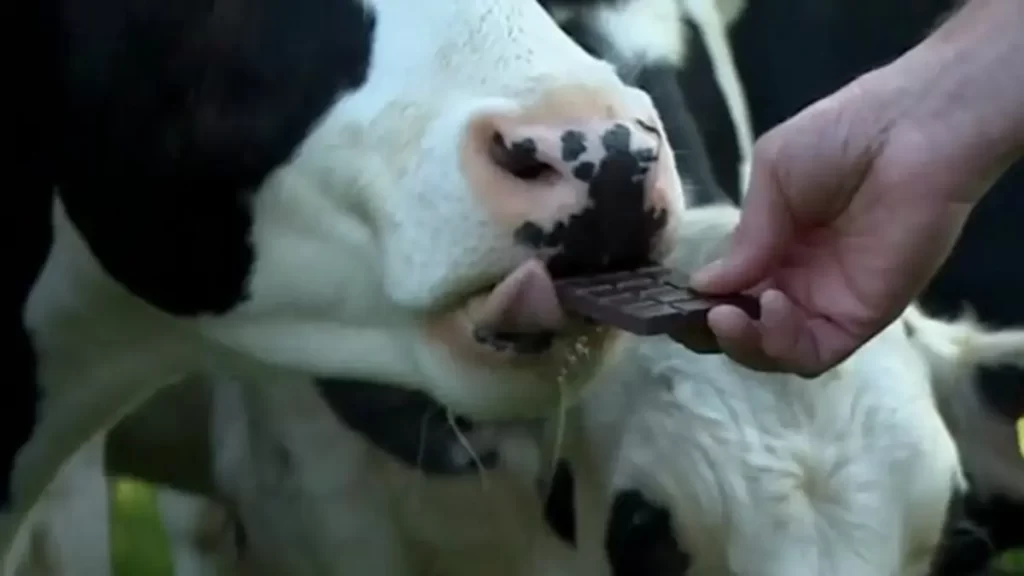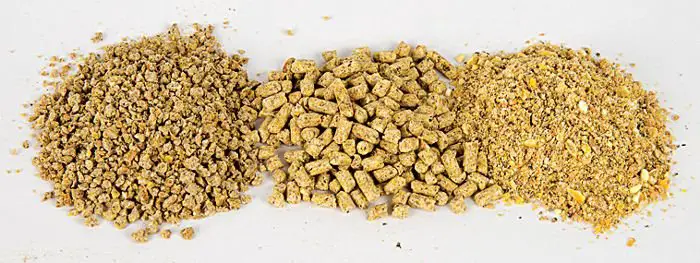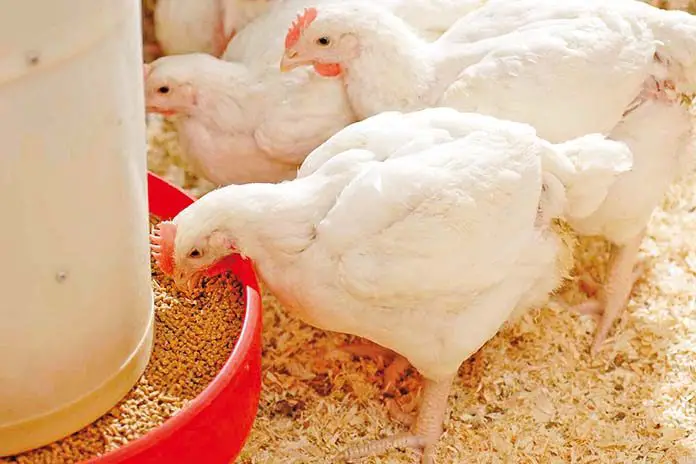It would be interesting to have a cow producing chocolate-flavored milk. What would happen if you had a cow on a diet of chocolates? It would be a pretty spoiled cow I guess, but feeding chocolate to cows is not that far-fetched. Cows can eat chocolate but as part of a nutritionally balanced ration, as the sweet delights can be used as an energy source. Chocolate is a favorite sweet for many people, with over 7 million tons produced every year there are bound to be many rejects, and by-products available for cow feed. Creative farmers have been known to feed chocolates and other sweets to substitute grain in cow feed, the is even word that it makes for the best wagyu cow beef.
Contents
Carbohydrates and Sugar in Ruminant Digestion
Cows have a complex four-chamber stomach, called the rumen, where fiber ingested by the cow is broken down by the rumen microbes to produce nutrients for the cow. The rumen of the cow is a big fermentation vat that requires starch, protein, and fiber for fermentation to occur. If any of these nutrients is missing the fermentation process can stop or will be very low. Carbohydrates or starch act as energy sources for the fermentation process and are key for the whole process to occur. Traditional carbohydrate sources for cows are cereal grains and/or tubers. However, there is always competition for these energy sources between humans and animals which normally leaves the cows with limited or very expensive energy sources. Cattle farmers are always looking to reduce the cost of production and one way of doing this is to find cheaper energy sources. Most of these alternatives are by-products of grain milling and other industries that produce human food. Chocolate contains a lot of sugar which can be utilized by cows as an alternative energy source where supply and pricing allow.
Typical Nutritional Profile of Chocolate
Chocolate has come a long way since the original Aztec bitter drink with many versions now being made across the globe. Although it is now very difficult to come up with a typical analysis of chocolate because of this variation, there are some common things about chocolate today. Most chocolate produced contains cocoa powder, milk, cocoa butter, and sugar in varying proportions depending on brand and manufacturer. The fat and sugar in chocolate act as energy sources to support the coupled fermentation in the rumen, where chocolate is fed to cows. Chocolate also has a very low protein and fiber content, hence these nutrients will need to be supplemented when feeding cows.
How to Feed Chocolate to Cows?
Chocolate should be fed to cows not as a sole feed as it is predominantly an energy feed due to the high sugar content. Chocolate should be incorporated into the feed as a part of a nutritionally balanced feed. This means that the chocolate should be analyzed for nutrient content so that it can successfully be incorporated into the final balanced feed. Because most chocolate available for cattle feeding is mostly from factory rejects, it normally comes complete with wrappers. To save on costs farmers can grind the chocolates together with other ingredients so that it’s incorporated easily into the feed with minimal handling. The chocolate can also be melted down with other sugar by-products like molasses and used as such.
By-Products From Chocolate Manufacturing
Chocolate is made from cocoa, and the pods and substandard seeds can be used to feed cows. Fresh cocoa pods can be fed to cows with no effects on their productivity, most cocoa by-products are rendered harmless after being boiled and dried.
Benefits of Feeding Chocolate to Cows
The main benefit of feeding chocolate to cows is that it takes thousands of tons of potential waste from landfills at the same time providing a cheaper alternative to expensive cereal grains. Where available at cost-effective prices chocolate offers a good alternative to grains reducing the competition for grains between humans and animals and also making cattle enterprises more profitable.
Constraints of Feeding Chocolate to Cows
Chocolate can only be fed in minimal amounts as it is high in sugar and very low in fiber which can cause acidosis which can be fatal to cows. Fat in chocolate can coat the grass forage preventing proper access by rumen microbes to the fiber, hence affecting the digestibility of the forage. Cows need some time to adjust to new diets, normally a period of two weeks hence should be fed a fairly consistent diet. Chocolate or its by-products might not be always available and at cost-effective prices which can lead to many diet changes in short periods affecting the performance of the cows. Where factory rejects are available for cow feed, the chocolate is mostly ground up including the wrappers which can obstruct the gut of the cow and also cause a lot of microplastics to pollute the environment. Because of the large variety of chocolate bars, all chocolate meant for feeding to cows should be analyzed for nutrient content before feeding to avoid imbalances in the final feed.
How Much Chocolate Can a Cow Eat?
Chocolate should be fed to cows in moderation as it is high in sugar, and should be fed to supply energy when mixed with other ingredients. How much to feed also is determined by the price of the chocolate available for feeding. If the chocolate is expensive less will be included in the cow feed to reduce feed cost.
Conclusion
Cows can eat chocolate as an energy source, replacing traditional energy sources in the form of grains. Most chocolate available is high in sugar and low in fiber which makes it a good energy feed for mixing with forage to make a complete feed. However, this nutrient profile makes chocolate a high-risk feed for cows as it is easily digestible and can lead to bloat and acidosis when fed in excess without fiber supplementation. Most chocolate available for cow feed is mainly from factory rejects which helps reduce environmental waste while also reducing completion for grain.




